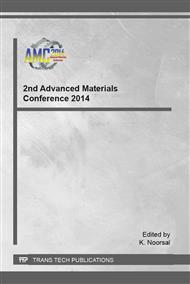p.280
p.285
p.290
p.295
p.300
p.305
p.310
p.314
p.319
Studying the Effect of Precipitation Hardening on 6061 Aluminum Alloy Weldments
Abstract:
The high specific strength, ease of working, good weldability and the ability to be precipitation strengthening have increased the demand of aluminium alloys in aerospace and automobile industries. In this research the effect of artificial aging/precipitation hardening on mechanical properties and microstructures of 6061 aluminum alloy weldments produced using gas tungsten welding (TIG) was studied. The artificial aging of welded alloy was carried out at temperatures varying from 150°C to 170°C for different period of time. The Vickers hardness and tensile test were carried out to evaluate the response of material to heat treatment. The experimental work showed that the maximum hardness and tensile strength of 6061 aluminum welded samples was achieved when aged at 170°C (after solution treatment) for 2 and 10 hours. Scanning electron microstructure analysis revealed that after solution treatment, when the samples were aged at 150-170°C, the Mg2Si precipitates present in the grains grows in size and develop stress in the grain and resulted increment in hardness.
Info:
Periodical:
Pages:
300-304
Citation:
Online since:
January 2016
Price:
Сopyright:
© 2016 Trans Tech Publications Ltd. All Rights Reserved
Share:
Citation:


